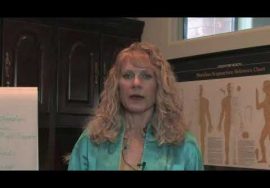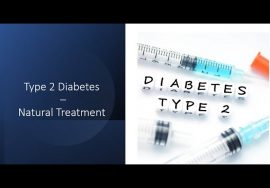Diabetic Ketoacidosis (DKA) Pathophysiology, Animation
Diabetic ketoacidosis (one of the hyperglycemic crises), DKA, pathophysiology, causes, clinical presentation (signs and symptoms) and treatment. This video is available for instant download licensing here:
Voice by: Penelope Hammet
©Alila Medical Media. All rights reserved.
All images/videos by Alila Medical Media are for information purposes ONLY and are NOT intended to replace professional medical advice, diagnosis or treatment. Always seek the advice of a qualified healthcare provider with any questions you may have regarding a medical condition.
Support us on Patreon and get FREE downloads and other great rewards: patreon.com/AlilaMedicalMedia
Diabetic ketoacidosis, DKA, is an ACUTE and potentially life-threatening complication of diabetes mellitus. DKA is commonly associated with type 1 but type 2 diabetics are also susceptible. DKA is caused by a critically LOW INSULIN level and is usually triggered when diabetic patients undergo further STRESS, such as infections, inadequate insulin administration, or cardiovascular diseases. It may also occur as the FIRST presentation of diabetes in people who did NOT know they had diabetes and therefore did NOT have insulin treatment.
Glucose is the MAJOR energy source of the body. It comes from digestion of carbohydrates and is carried by the bloodstream to various organs. Insulin is a hormone produced by beta-cells of the pancreas and is responsible for DRIVING glucose INTO cells. When insulin is DEFICIENT, glucose can NOT enter the cells; it stays in the blood, causing HIGH blood sugar levels while the cells are STARVED. In response to this metabolic starvation, the body INcreases the levels of counter-regulatory hormones. These hormones have 2 major effects that are responsible for clinical presentation of DKA:
– First, they produce MORE glucose in an attempt to supply energy to the cells. This is done by breaking down glycogen into glucose, and synthesizing glucose from NON-carbohydrate substrates such as proteins and lipids. However, as the cells CANNOT use glucose, this response ONLY results in MORE sugar in the blood. As blood sugar level EXCEEDS the ability of the kidneys to reabsorb, it overflows into urine, taking water and electrolytes along with it in a process known as OSMOTIC DIURESIS. This results in large volumes of urine, dehydration and excessive thirst.
– Second, they activate lipolysis and fatty acid metabolism for ALTERNATIVE fuel. In the liver, metabolism of fatty acids as an alternative energy source produces KETONE bodies. One of these is acetone, a volatile substance that gives DKA patient’s breath a characteristic SWEET smell. Ketone bodies, unlike fatty acids, can cross the blood-brain barrier and therefore can serve as fuel for the brain during glucose starvation. They are, however, ACIDIC, and when produced in LARGE amounts, overwhelm the buffering capacity of blood plasma, resulting in metabolic ACIDOSIS. As the body tries to reduce blood acidity by EXHALING MORE carbon dioxide, a deep and labored breathing, known as Kussmaul breathing may result. Another compensation mechanism for high acidity MOVES hydrogen ions INTO cells in exchange for potassium. This leads to INcreased potassium levels in the blood; but as potassium is constantly excreted in urine during osmotic diuresis, the overall potassium level in the body is eventually depleted. A blood test MAY indicate too much potassium, or hyperkalemia, but once INSULIN treatment starts, potassium moves BACK into cells and hypokalemia may result instead. For this reason, blood potassium level is monitored throughout treatment and potassium replacement is usually required together with intravenous fluid and insulin as primary treatment for DKA.












Suggested topic: “The 3 P’s” is often cited as signs of hyperglycemia. Polyuria is often readily evident in acute hyperglycemia– and the relationship between polyuria and polydipsia is easy to understand. The “third P” however, polyphagia, isn’t as easy to understand– and, in my experience as an RN, I didn’t observe acute increased hunger in patients with acute hyperglycemia.
On the other hand, I frequently observed chronic polyphagia in patients with chronic hyperglycemia.
— A video on “the 3 Ps” that explained the pathophysiology of hyperglycemia-related polyphagia would be great.
I also want to thank you for your terrific videos. They are, without any equals, the best quick video summaries about pathophysiology on the Internet. Your explanations are always cleanly presented, clarified by terrific animation, and focused on relevant issues.
Nice video, I love my Libre 14days and Blucon cgm together, both helps me to manage my blood glucose. My Blucon give me alarms on my and my partners phone when I’m high or low so that’s nice.
this was absolutely the best explanation on dka i ever came across. had never been able to understand it from lectures, self reading, or other videos. yr channel is the best. thank you .
Indeed
Absloutely the BEST , short , sweet and to the point. Very well done !
You explained better than most of the journal articles I am reading. Thank you
its an amazing learning experience , thanks alila
Fantastic video. Summed up my entire AEMT school section on DKA in minutes
I would love to watch video on bleeding time clotting time prothrombin time and its significance.
Great animation of the potassium imbalance issue, thank you.
Excellent explanation…clearly understood the pathology
Thnk you. You explain it in a really simple way. I really appreaciate it
I like your videos because they cut straight into the axis of the subject and don’t loiter around in uncertainty as many do. I wish you could cover the relationship between high glucose in the blood with the effect it has on blood brain barrier resulting in metabolic acidosis and such effect on amyloid beta protein activity in Alzheimer! This Triangle I have been trying to put together lately and in need to verify!
Extremely awesome , god bless ya team
Thanks. I am a layman in medical field. I like to know how heat is generated in body. Which type of energy our body systems use.
SO HELPFUL! thank you
Choices of iv fluids replacement. Thanks
If this video is helpful to you, please consider supporting our next projects. As a token of our appreciation, we also offer early video access and free image downloads in return, please check us out here: https://www.patreon.com/AlilaMedicalMedia
perfect explanation thank you
thanks! explained calmly and systematically. nice animation also 🙂
Well done, thank-you